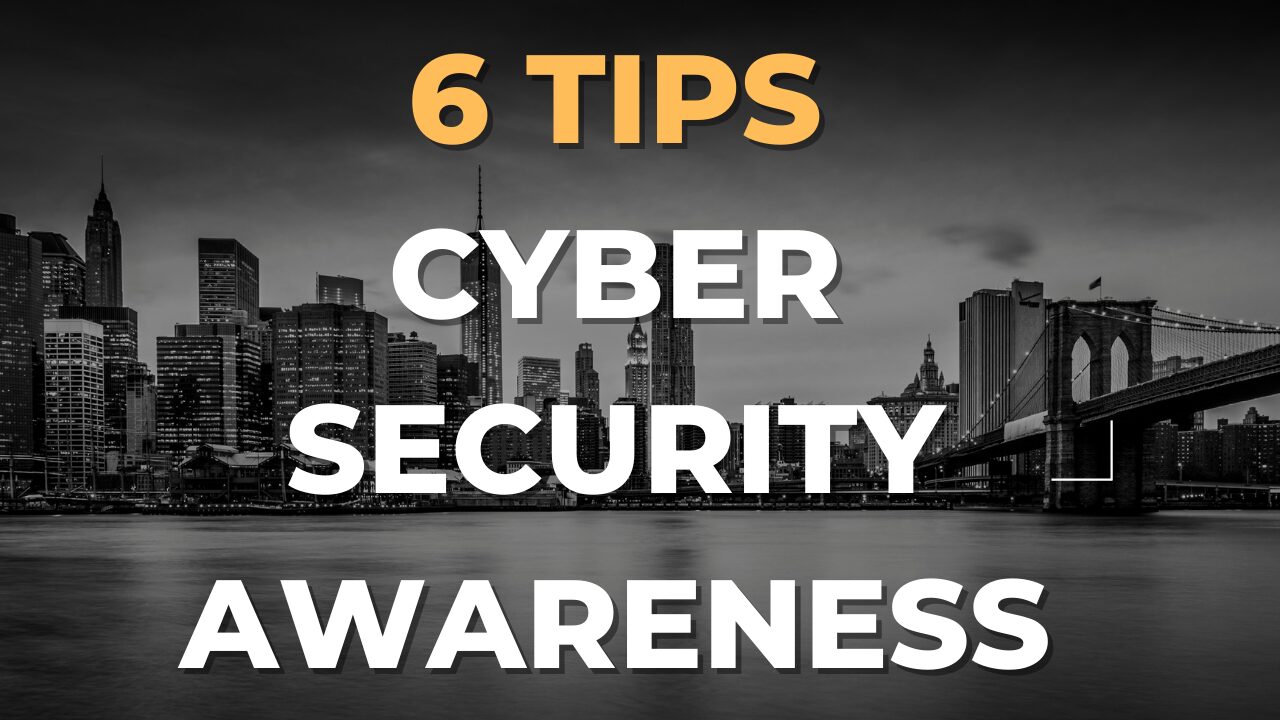Old School Cyber Attacks: A 2023 Analysis of Timeless Threats
In the world of cybersecurity, new threats and attack techniques continuously emerge, capturing the attention of security professionals and organizations alike. However, it is crucial not to neglect the dangers posed by old-school cyber attacks. Despite the advancements in cyber defense technology, these tried and tested methods continue to find success in today’s digital landscape.
As you delve further into the topic of old-school cyber attacks, you will discover that the persistence of these techniques stems from their simplicity and effectiveness. Cybercriminals maintain a focus on these attacks because they continue to work, exploiting vulnerabilities and capitalizing on human error in various systems.
Throughout the article, you will gain a deeper understanding of the various types of old-school cyber attacks, their potential impact, and the steps that can be taken to mitigate their risks. Familiarizing yourself with these attacks will help protect your organization and build a solid foundation for comprehending the ever-evolving world of cybersecurity.
Old School Cyber Attacks: An Overview
Despite the emergence of more sophisticated techniques, old school cyber attacks still pose a significant threat in today’s digital landscape. You may wonder why these older methods have not been entirely replaced, but the simple reason is that they continue to yield results for cybercriminals.
As you explore the various old school attacks, remember that they primarily exploit human weaknesses and well-known system vulnerabilities. For instance, phishing attacks remain prevalent, targeting users who may unknowingly click on malicious links or provide sensitive information.
Another example is using brute force attacks involving trial and error in breaking encryption and authentication systems. While more advanced technologies have been developed to counter these attempts, they remain a concern, especially for smaller organizations with limited cybersecurity resources.
The persistence of denial-of-service (DoS) attacks is also noteworthy. These attacks aim to overwhelm servers with traffic, rendering targeted systems virtually inaccessible. As long as cybercriminals can find vulnerable servers, DoS attacks will continue to be a menace.
To safeguard your systems and data from these old school cyber attacks, it is essential to:
- Update and patch software regularly to avoid known vulnerabilities
- Train employees on cybersecurity best practices, including how to recognize phishing emails and other potential threats
- Implement strong authentication methods to minimize the effectiveness of brute force attacks
- Maintain backups and disaster recovery plans to mitigate the impact of potential security breaches.
In conclusion, old school cyber attacks should not be overlooked in favor of newer techniques. By understanding the persistent risks and taking proactive steps to mitigate them, you can better protect your digital assets and maintain a secure online environment.
The Dawn of Cyber Attacks
The Morris Worm
In November 1988, the Morris Worm became one of the first prominent cyber attacks to gain widespread attention. The worm was developed by Robert Tappan Morris, a student at Cornell University. This malicious program aimed to exploit vulnerabilities in Unix systems, primarily through the sendmail and finger protocols.
Upon infection, the worm would replicate itself, consuming your system’s resources and leading to a slowdown or even crashing your computer. Although the worm did not steal data or intentionally damage systems, the unintentional harm it caused resulted in legal consequences for its creator.
ILOVEYOU Worm
In May 2000, the ILOVEYOU Worm emerged as a significant global cyber attack, impacting millions of users. This worm was delivered via email which contained a suspicious attachment. When opened, the attachment would proceed to infiltrate the victim’s computer.
The worm targeted various file types on your machine, including. .jpg, .jpeg, and .mp3 files, replacing them with copies of itself. The ILOVEYOU Worm would spread further by sending itself to everyone in your email contacts list. The rapid expansion of this worm generated extensive financial losses for businesses worldwide.
Code Red and Nimda
The Code Red and Nimda worms both surfaced in 2001, adding to the growing list of cyber attacks that exploited vulnerabilities in internet-facing systems. These worms targeted Microsoft Internet Information Services (IIS) servers, causing widespread damage.
Code Red would deface websites hosted on infected servers, spreading itself to other vulnerable servers by exploiting a buffer overflow vulnerability. On the other hand, Nimda had multiple attack vectors, including email attachments, network shares, and web browsing.
These worms caused significant disruption to internet services, emphasizing the importance of securing web servers and staying updated with security patches. As you navigate the digital world, be aware that old school cyber threats are a reminder to maintain vigilance in protecting your information and systems.
Types of Old School Cyber Attacks
Malware
Malware, short for malicious software, encompasses various harmful programs that infiltrate your computer system without your consent. These include viruses, worms, and Trojan horses. Malware spreads through email attachments, unsecured websites, and infected software installations.
- Viruses can self-replicate and often attach themselves to legitimate files, corrupting your data.
- Worms are malware that spreads quickly, using network vulnerabilities to infect multiple systems.
- Trojan horses masquerade as legitimate software but, once installed, can damage files, steal sensitive information, or allow attackers to control your computer remotely.
To protect your system from malware, ensure you use security software, regularly update your operating system, and exercise caution when downloading files or opening email attachments.
Phishing
Phishing attacks involve cybercriminals attempting to steal sensitive information like login credentials or financial data. They do this by posing as a legitimate institution and tricking you into providing your information. This can be accomplished through deceptive emails, phone calls, or websites.
Some common phishing methods include:
- Email phishing: Criminals send emails resembling official correspondence that prompt you to reveal sensitive data.
- Spear phishing is a targeted attack on specific individuals, often using personalized information to gain your trust.
- Website phishing: Attackers create fake websites that appear legitimate, enticing you to enter your data.
To guard against phishing attacks, always verify the source of communication, avoid clicking on suspicious links, and use security software to help detect malicious websites.
Denial-of-Service (DoS)
A Denial-of-Service (DoS) attack disrupts your ability to access online services, websites, or networks. Attackers do this by overwhelming the system with excessive traffic, rendering it unable to respond to legitimate requests.
There are several types of DoS attacks, including:
- Flood attacks: Attackers inundate the target system with unsolicited traffic, consuming valuable bandwidth and resources.
- Application-level attacks target specific application vulnerabilities and can be more difficult to detect.
- Distributed Denial-of-Service (DDoS): This type of attack uses multiple compromised systems to amplify the impact on the target.
To mitigate the risk of DoS attacks, implement security measures like firewalls, intrusion detection systems, and application security updates. Additionally, consider employing cloud-based solutions that can help distribute traffic and withstand larger-scale attacks.
Key Players in Early Cyber Attacks
In the early days of cyber attacks, several notorious individuals and groups emerged as key players. Understanding their actions and motivations will give you a better grasp of the landscape of early cyber threats.
Robert Tappan Morris was a graduate student at Cornell University when he created the Morris Worm in 1988. This self-replicating program exploited vulnerabilities in Unix systems, affecting an estimated 10% of all Internet-connected computers at the time. While he claimed the worm was intended to gauge the size of the Internet, its unintended consequences were substantial, leading to his conviction under the Computer Fraud and Abuse Act.
Another prominent figure in early cyber attacks was Kevin Mitnick. Starting in the late 1970s, Mitnick honed his “phone phreaker” skills before transitioning to computer hacking. His high-profile exploits included breaking into the systems of Digital Equipment Corporation, IBM, and Nokia. He became a key figure in understanding social engineering techniques, using deception and manipulation to gain unauthorized access. Mitnick was arrested in 1995 and spent five years in prison before becoming a respected security consultant.
In addition to individual hackers, early cyber attacks saw the rise of organized hacking groups. One such group, Legion of Doom, originated in the United States during the mid-1980s. Members of this group, such as Phiber Optik and Erik Bloodaxe, were known for targeting telephone companies and committing various acts of computer trespassing. Their actions played a significant role in shaping the cyber security landscape and influencing future hacking groups.
The hacker collective Chaos Computer Club emerged from Europe in the early 1980s, focusing primarily on exploring computer systems and networks. They gained notoriety after exposing vulnerabilities in both the German Bildschirmtext system and the NASA network. While their approach was often more educational and exploratory than malicious, their work highlighted the importance of identifying and addressing security flaws.
These key players in early cyber attacks demonstrated the power and potential of exploiting computer systems, and their actions played a pivotal role in shaping the modern cyber security landscape we know today. By understanding their motivations and methods, you can better protect your own systems and networks from similar threats.

Impacts of Old School Cyber Attacks
In the early days of the internet, old school cyber attacks posed significant threats to individuals, companies, and governments. As you explore the impacts of these attacks, you’ll discover how they led to financial losses, compromised sensitive data, and damaged reputations.
One of the primary consequences of old school cyber attacks was the financial loss experienced by the victims. Identity theft and fraud were common occurrences wherein attackers would steal and use personal information for unlawful purposes. This led to financial losses for the victims and the institutions involved, such as banks and credit card companies.
Another significant impact of old school cyber attacks was the theft of sensitive information, such as trade secrets, classified documents, and customer data. This could cause severe damage to businesses and governments, as confidential information could be leaked or sold to competitors or adversaries. Additionally, it exposed customers to further attacks and caused a breach of trust between them and the affected institutions.
Moreover, old school cyber attacks often lead to the disruption of essential services. For instance, Denial of Service (DoS) attacks overwhelmed targeted systems with excessive traffic, resulting in the inability to access online services. This type of attack could have significant consequences for organizations that rely on the availability of their services for revenue or essential operations.
The following are some examples of the impacts of old school cyber attacks:
- Financial loss: identity theft, fraud, and extortion
- Theft of sensitive information: trade secrets, classified documents, and customer data
- Disruption of services: Denial of Service (DoS) attacks, defacement of websites, and data corruption
In conclusion, old school cyber attacks significantly impacted individuals, businesses, and governments. Though these attacks may seem dated compared to today’s sophisticated cyber threats, understanding their consequences provides valuable insights into the critical importance of maintaining strong digital security and protecting sensitive information.
Defence Mechanisms Against Early Cyber Threats
Firewalls
In the early days of cyber threats, a firewall was one of the first defense mechanisms you could use. A firewall is a barrier between your computer and the internet, ensuring that only authorized data passes through. It works by filtering incoming and outgoing traffic, allowing only trusted connections.
You can think of a firewall as a physical gate restricting access to your digital property. It was (and still is) a crucial tool for protecting your system from malicious network traffic.
Anti-virus Software
Another vital defense mechanism against early cyber threats was anti-virus software. This software scans your computer for known viruses and malware, providing real-time protection and on-demand scans.
Anti-virus software works by utilizing:
- Signature-based detection: Comparing files on your system to a database of known malware signatures.
- Heuristic analysis: Identifying suspicious code in files by analyzing their structure, behavior, and other characteristics.
By employing these techniques, anti-virus software can help you maintain a secure computing environment, defending against various cyber threats. It’s important to keep your anti-virus software up-to-date with the latest virus definitions for optimal protection.
In summary, firewalls and anti-virus software remain essential in defending against early cyber threats. Taking a proactive approach to your cybersecurity can significantly decrease the risk of falling victim to a cyber attack.
Lessons Learnt and The Evolution of Cybersecurity
Over the years, cybersecurity has faced and survived old school cyber attacks, leading to invaluable lessons and advances in protection methods. As you became aware of the ever-present digital threats, you began implementing the right precautions to safeguard your information.
Initially, basic antivirus software was sufficient. However, as cybercriminals grew more sophisticated, you understood the need for a more comprehensive approach. The introduction of firewalls provided an additional layer of protection against unauthorized attempts to access your network.
With the advent of email and widespread internet usage, phishing attacks became a prevalent concern. In response, organizations like yours started implementing awareness campaigns, training employees to recognize and report such threats, and developing stronger email filtering mechanisms.
Multi-factor authentication (MFA) emerged as a vital security measure, ensuring you safeguard your accounts by adding an extra verification level. With the implementation of MFA, even if attackers compromise your password, they cannot access your account without bypassing additional authentication steps.
As cyber crimes continued to evolve, you realized the importance of staying proactive, adopting practices like:
- Regularly updating software and systems
- Implementing strong, unique passwords
- Monitoring for signs of intrusion
- Investing in a skilled cybersecurity team
Ultimately, you learned that the best defense is a proactive and comprehensive approach to cybersecurity that remains current with the ever-changing landscape of digital threats. By staying vigilant and adapting, you continue to protect yourself from the consequences of security breaches.
Conclusion
You have now learned about various old school cyber attacks that were prevalent in the early days of the internet. These attacks, such as phishing, worms, and distributed denial-of-service (DDoS), were a significant concern for organizations and individual users alike.
- Phishing was a common method used by attackers to deceive recipients into revealing sensitive information. Be vigilant against these deceptive emails.
- Worms such as the infamous ILOVEYOU worm spread rapidly, causing significant damage to networks. Protect yourself by updating your software regularly.
- DDoS attacks could overwhelm servers, taking down websites or online services. Implement defensive measures such as firewalls and intrusion detection systems.
Today, modern security solutions have evolved to address these threats, making them far less common. However, it is essential to remain aware of the history and development of these attacks to develop more effective security measures in the future.







